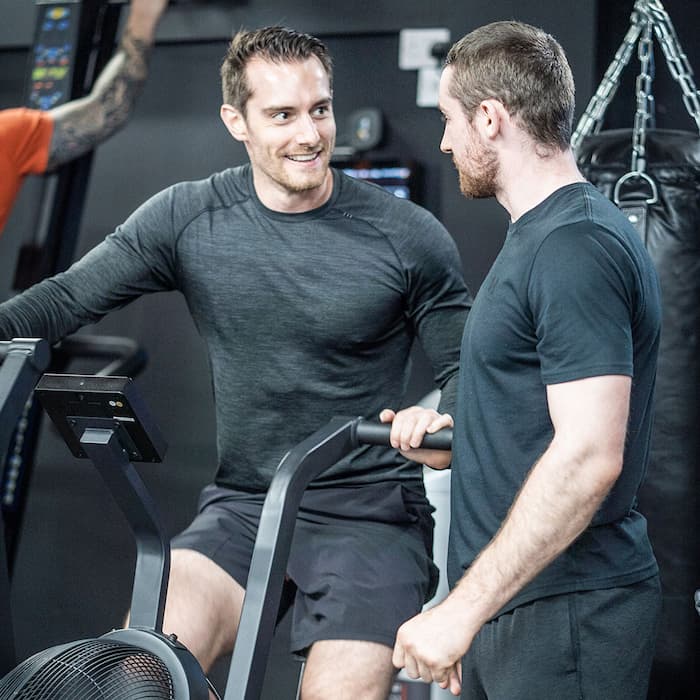
Categories
3 Ways to Boost Your Endurance Training
Endurance training isn’t just about putting the miles in – it’s about strength, mobility and nutrition.
Resistance and functional training may be the current darling of mainstream fitness, but endurance training – and the events that inspire it, are becoming increasingly popular.
Even the less-than-super-human amongst us are in training for mud-runs, marathons, ultra-marathons and triathlons. And it makes sense – with the exception of cycle-based events, endurance training is accessible, gets us outdoors and is a lot cheaper than most unfruitful gym memberships. The other plus is that all these endurance events provide a goal and purpose, which is hugely important when it comes to long-term exercise adherence and getting those apathetic gym-goers amongst us into fitness.
But if we want to make the most of our time spent training, it isn’t just a case of doing the mileage. If we are striving to improve on technique and time, and be able to keep it up later in life, we need to consider strength, mobility and nutrition, and this is why:
STRENGTH for endurance:
Increasing overall strength improves training and performance, and more importantly, helps to keep us injury-free. Yes it can be hard to find the time and motivation for gym work when we are clocking up the miles, but the repetitive nature of endurance training is tough on the joints, especially the knees, so it’s key. Try to find the minimum effective time to maintain muscle mass and you’ll keep your joints healthy, while your body will be stronger and balanced.
Increasing strength is not just about lifting more weight; it’s about making the system more robust so it’s less prone to injury. A good place to start is strengthening the muscles along the ‘posterior chain’ at the back of the body, the mid and lower back, hip stabilisers, hamstrings and calves, whilst ensuring those classically overworked areas, including the quads and hip flexors, are healthy.
MOBILITY and STRETCHING for endurance:
Anyone who does endurance training should embrace soft tissue release for the working order of joints, by way of regular massage or enthusiastic use of a foam roller.
The foam roller is of course easier to do regularly, but while it relieves soreness, boosts circulation and recovery, it doesn’t have quite the same impact in stretching out our fascia (the connective tissue that surrounds muscle). For those hard-to-reach places get yourself a hockey ball – they are brilliant for working the soles of your feet and glutes. The other downside to this method is that it’s a case of no-pain no gain, so the DIY method can hold you back as you’re effectively pulling the strings.
Mobility should also be included here – it goes hand in hand with soft tissue work, which breaks down adhesion’s, irons out niggles and increases blood flow to the worked areas, while mobility exercises then stretch and move the joints through the required range, keeping us structurally healthy, and in turn, injury free. Key areas for mobility focus on most of us are the ankle, hip and mid-back – all of which tend to be overworked and tighten up.
NUTRITION for endurance:
Basic nutrition is arguably the most important tool for improving performance and recovery, especially so for endurance training given how demanding it is on the body. Any endurance athlete should think about nutrient deficiencies, chronic exposure to systemic stress and gut health.
We often ignore gut health, but given that our immune system is strongly correlated with our gastrointestinal well-being, ensuring that our gut is happy will go a long way to keeping us healthy and fit. From a practical perspective, one of the biggest reasons for DNF’s (did not finish) in Ironman triathlon events for example, is gastrointestinal issues. The training itself is tough on the body, which is then compounded by the use of sports gels and other intra-workout supplements, which many of us have a hard time digesting.
A good starting point is a broadly Paleo base, meaning protein and vegetables, which we can build upon to suit our individual training requirements. Whether we chose to fuel with carbs, or opt for a more fat adapted fuel approach, getting adequate protein and a broad base of nutrients is the key. Important also is our overall energy balance, as the right foods, in the right amounts, will keep us healthy, lean and adequately fuelled. Supplementing your diet with some probiotics, digestive enzymes and glutamine is often beneficial, as is swapping gels for more natural foods, such as dried fruit or bananas.
If you have any questions on the above or would like some advice on how we could help you with your fitness goal, don’t hesitate, visit our gym in Old Street and try one of our personal fitness training programmes.
Related Articles
- Speed Training for Endurance
- Strength Training for Endurance Goals
- Interval Training: Maximise your Progress
- Fitness Training & Nutrition – A Match Made in the Gym
- Take Your Training up a Gear


